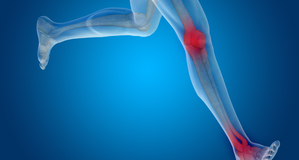Stroke Rehabilitation and Neuroplasticity: Efficacy and Methods Available
By
2012, Vol. 4 No. 05 | pg. 2/2 | « With regards to fine motor skills, repeating the same activities every day (such as putting on make-up, picking up and putting down a coin) that require fine motor skills as opposed to more strenuous forms of activity, can have a positive effect on post-stroke rehabilitation for cognitive motor skills. The idea is to produce new neural pathways in order to compensate for the damaged pathways, and these exercises can help promote neuroplasticity in post-stroke patients (Johansson, B.B., 2011; NICE Guidelines, 2008). With more strenuous motor movements, there is a difference. For example, with arm movement, studies have shown that it is more beneficial to conduct bimanual exercises as opposed to merely exercising the affected arm alone (Bracewell, R.M., 2003; Johansson, B.B., 2011). Bimanual exercises have also been shown to have a direct effect on promoting cortical neural plasticity in various ways: ‘(a) motor cortex disinhibition that allows increased use of the spared pathways of the damaged hemisphere, (b) increased recruitment of the ipsilateral pathways from the contralesional or contralateral hemisphere to supplement the damaged crossed corticospinal pathways, and (c) upregulation of descending premotorneuron commands onto propriospinal neurons’ (Cauraugh J. H.,Summers J.J., 2005, abstract). Lower-limb treadmill exercise has also been shown to be effective for CNS plasticity (Forrester, L. W.,Wheaton, L.A., &Luft A.R., 2008). Patients who received neuromuscular stimulation assistance exhibited better results than patients who did not receive such treatment (Bracewell, R.M., 2003). In this study, patients voluntarily moved their arms. Once the threshold in their arm muscles was reached, an electrical current was sent through to assist with this movement (Connor B., Harvey, D.A., & Bracewell, R.M, 2002).Memory loss within one year (especially dementia) is particularly common in stroke patients who are of a certain age group (NICE Guidelines, 2008). It is imperative that if a stroke patient has suffered any kind of memory loss, that steps are undertaken in order to help improve their memory. Memory aids assist in the primary stages of post-stroke rehabilitation (such as a small notebook, an alarm etc.). Though memory is very difficult to regain in a post-stroke patient, preserving what is left of their memory as well as assisting them in remembering everyday tasks is important for a stroke patient’s rehabilitation. ConclusionThe efficacy of the rehabilitation methods is dependent on the patient’s individual needs and clinical circumstances. In most cases, a combination of all three rehabilitation methods is utilized for most post-stroke patients. It can be argued that the effectiveness of all three rehabilitation methods depends heavily on how they are administered or conducted. For example, certain types of cognitive rehabilitation are proven to be less effective with regards to post-stroke patient rehabilitation than other types (bimanual arm exercises being more effective than lone arm exercises). However, in terms of neuroplasticity, cognitive rehabilitation methods are the most effective. This is because they work directly with the cognitive mechanisms of the brain (such as memory, speech, attention, motor movements). Cognitive rehabilitation works to help the brain form new neural pathways, and to work without the part that has been affected. How the cognitive rehabilitation is conducted makes a huge difference in how effective it is in terms of neuroplasticity, in the sense that some forms of exercises are more effective than others. For example, it has also been shown that cognitive rehabilitation that encourages plasticity contralateral to the affected limbs is more effective for rehabilitation than merely working to reorganize the unaffected hemisphere (Bracewell, R.M., 2002; Hallett, M., 2001; Johansson, B.B., 2011). Constraint-Induced Movement Therapy (CIMT) is another key exercise for motor skills rehabilitation; it involves forced use of the impaired limb by putting a splint on the unaffected limb (Johansson, B.B., 2011). There is ample evidence of achieving a better outcome of neurorehabilitation with early initiation of treatment with specific goals and active therapies, and the coordinated work of a specialized team (Albert, S. J. & Kesselring, J., 2011). As well as determining the correct combination of these rehabilitation techniques to use, the precise timing between diagnosis and initiating rehabilitation is important. There are on-going studies which demonstrate that starting rehabilitation as early as 24 hours after the stroke is highly effective for rehabilitation (Albert, S. J. & Kesselring, J., 2011). Alongside these rehabilitation techniques, genetic predispositions towards neuroplasticity can also determine how someone can recover from a stroke; some people have more plastic neural systems than others (Johansson, B. B., 2011). The core objective of rehabilitation for post-stroke patients is to improve, maintain, and normalize where possible biopsychosocial functioning, leading to an improved quality of life. By implementing evidence-based preventative measures, the risk of recurrent strokes is decreased. Each patient has individual needs, and their rehabilitation programs will be constructed as such. ReferencesAlbert, S. J. and Kesselring, J. (2011). Neurorehabilitation of Stroke. Journal of Neurology, 1-16. doi: 10.1007/s00415-011-6247-y Belayev, L., Khoutorova, L.,Atkins, K. D.,Eady, T. N.,Hong, S.,Lu, Y.,Obenaus, A., and Bazan, N.G. (2010)Docosahexaenoic Acid Therapy of Experimental Ischemic Stroke.Translational Stroke Research. doi:10.1007/s12975-010-0046-0 Bracewell, R. M. (2003). Stroke: Neuroplasticity and Recent Approaches to Rehabilitation. Journal of Neurology, Neurosurgery and Psychiatry, 74(11). doi: 10.1136/jnnp.74.11.1465 Cauraugh, J.H., & Summers, J.J. (2005). Neural Plasticity and Bi-lateral Movements: A Rehabilitation Approach for Chronic Stroke. Progress in Neurology, 75(5), 309-320. doi: 10.1016/j.pneurobio.2005.04.001 Connor, B., Harvey, D.A., Bracewell, R.M.,et al. (2002).Response guided learning: research in cognitive rehabilitation following stroke. In: Sassoon R, ed.Understanding stroke. Lingfield: Pardoe Blacker. Członkowska, A., andLeśniak, M. (2009). Pharmacotherapy in Stroke Rehabilitation. Expert Opinion on Pharmacotherapy, 10(8),1249-1259. doi: 10.1517/14656560902941972 Font, M.A.,Arboix, A., andKrupinski, J. (2010) Angiogenesis, neurogenesis and neuroplasticity in ischemic stroke. Current Cardiology Reviews, 6(3), 238-244. doi: 10.2174/157340310791658802 Forrester, L. W.,Wheaton, L.A., andLuft, A.R. (2008). Exercise-mediated locomotor recovery and lower-limb neuroplasticity after stroke. Journal of Rehabilitation Research and Development, 45(2), 205-220. doi: 10.1682/JRRD.2007.02.0034 Gordon, N.F., Gulanick, M., Costa, F., Fletcher, G., Franklin, B.A., Roth, E. J., and Shepherd, T. (2004). Physical Activity and Exercise Recommendations for Stroke Survivors. Circulation, 109, 2031-2041. doi: 10.1161/01.CIR.0000126280.65777.A4 Hallett, M. (2001). Plasticity of the human motor cortex and recovery from stroke.Brain Research. Brain Research Reviews, 36(2-3), 169–174. doi: 10.1016/S0165-0173(01)00092-3 Higdon, J. (2005). Essential Fatty Acids. Retrieved from: http://lpi.oregonstate.edu/infocenter/othernuts/omega3fa/ Intercollegiate Stroke Working Party. (2008). National clinical guideline for stroke, 3rd edition. London: Royal College of Physicians. (abbreviated in text to NICE Guidelines, 2008). Johansson, B.B. (2011). Current Trends in Stroke Rehabilitation. A Review with focus on Brain Plasticity. Acta Neurologica Scandinavica, 123, 147-159. doi: 10.1111/j.1600-0404.2010.01417.x Jack, D.,Boian, R.,Merians, A.S.,Tremaine, M.,Burdea, G.C.,Adamovich, S.V.,Recce, M., &Poizner, H. (2001). Virtual-Reality Enhanced Stroke Rehabilitation. IEEE Transactions on Neural Systems and Rehabilitation Engineering, 9(3), 308-318. doi: 10.1109/7333.948460 Maud, A. (2006). Memory Loss after Stroke. Neurology, 67(8), 14-15. doi: 10.1212/01.wnl.0000244752.95386.de The Stroke Association.(2002). Retrieved December 14th, 2011, from http://www.stroke.org.uk/information/about_stroke/what_is_a_stroke/index.html Suggested Reading from Inquiries Journal
Inquiries Journal provides undergraduate and graduate students around the world a platform for the wide dissemination of academic work over a range of core disciplines. Representing the work of students from hundreds of institutions around the globe, Inquiries Journal's large database of academic articles is completely free. Learn more | Blog | Submit Latest in Health Science |


















